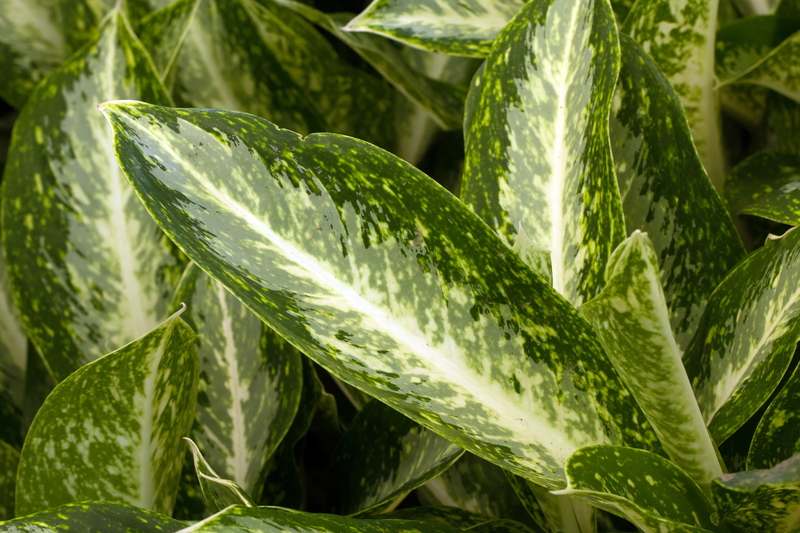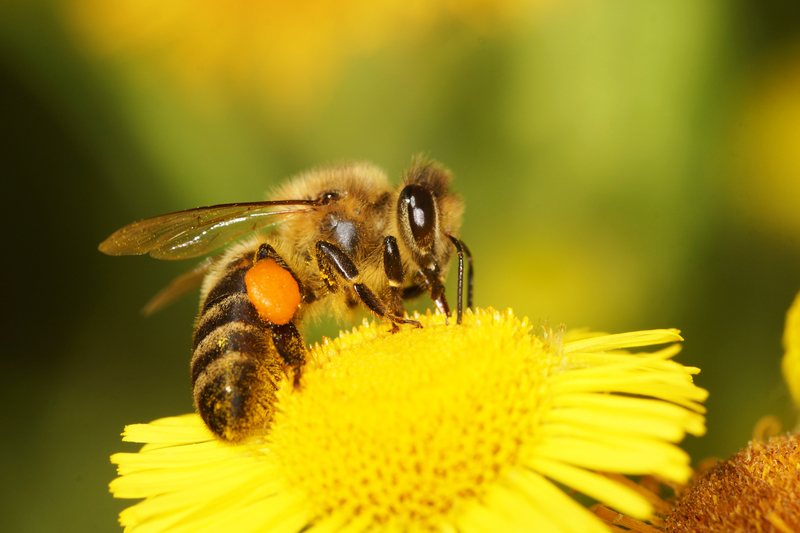Uniting Nature and Canines in Your Garden Design
Posted on 23/05/2025
Uniting Nature and Canines in Your Garden Design
Imagine a beautiful, eco-friendly outdoor space where nature's tranquility meets your furry friend's joy. Marrying the delight of gardening with the boundless energy of dogs creates not just a picturesque landscape, but a sanctuary that supports biodiversity and canine well-being. This comprehensive guide explores how to design a garden that unites nature and canines, ensuring harmony and happiness for all inhabitants of your backyard haven.

Why Combine Garden Design with Dog-Friendly Principles?
Modern homeowners are increasingly looking for ways to blend their love for gardening with the needs of their canine companions. A thoughtfully designed garden does more than beautify your property--it provides an enriching environment for dogs, promotes biodiversity, and creates a space where humans and pets can relax together. Uniting nature and canines in garden design isn't just a trend; it's a sustainable, joyful approach to outdoor living.
- Enhanced well-being for pets and people
- Increased opportunities for outdoor play and relaxation
- Biodiversity support and eco-friendly gardening
- Safe, stimulating environment for dogs
- Minimization of landscape damage from pet activities
Design Principles for a Dog-Friendly Natural Garden
To successfully unite nature and canines in your garden design, you must balance beauty, safety, and functionality. Here are the key principles:
1. Safety First: Choosing Dog-Safe Plants and Materials
- Non-toxic plants: Research all plant selections to ensure they're non-toxic to dogs. Examples include sunflowers, snapdragons, ferns, and marigolds.
- Avoid common hazards like lilies, daffodils, azaleas, and pesticides which are harmful to pets.
- Dog-friendly mulches: Opt for cedar, pine, or shredded bark. Avoid cocoa mulch, which is toxic to dogs.
- Secure fencing that keeps your dog safe while allowing wildlife to pass through in certain areas with special passageways.
2. Paths and Zones for Canine Play
Dogs love to patrol, run, and explore. Incorporate dedicated dog paths using soft, paw-friendly materials such as mulch, decomposed granite, or pea gravel. Design "race routes" around the garden's perimeter or through plant beds to satisfy your pup's instinct to explore without trampling delicate plant life.
- Winding garden paths add interest and accessibility for both humans and pets
- Enclose flower beds to shield them from rough canine play
- Install canine-friendly gates and entryways for controlled access
3. Dog Enrichment Features
A canine-friendly garden design can include enriching features such as:
- Dig pits filled with sand or soft soil to redirect natural digging instincts
- Water features like splash pools or gentle fountains for cooling and play, designed with dog safety in mind
- Shaded lounging zones under trees or with pergolas to give your pet respite from the sun
- Obstacle course elements (logs, tunnels, stepping stones) for physical and mental stimulation
Incorporating Biodiversity: Native Planting and Wildlife Support
A core benefit of uniting nature and canines in your garden design is the opportunity to support local wildlife and biodiversity while meeting your dog's needs.
- Native plants: Choose trees, shrubs, and perennials native to your region. These require less maintenance, support local pollinators, and are more resilient.
- Wildflower meadows: Create a mini meadow in a corner of your garden with dense, playful grasses and flowers. Dogs can explore, and pollinators will thrive.
- Bird and insect habitats: Install birdhouses, bee hotels, and bat boxes in locations your dog can't reach to encourage wildlife presence without risk.
- Water sources for wildlife should be separate or elevated, inaccessible to thirsty dogs.
By integrating biodiversity with a pet-friendly landscape, you create a sustainable garden full of life, color, and joyful movement.
Layout Ideas: Zoning Your Garden for Nature and Canine Harmony
Careful planning is vital to successful unity between nature and canines in your outdoor design. Use garden zoning principles:
- Canine activity zones: Designate open, robust lawn or soft-ground areas for fetch and play. Choose hardy, self-repairing turfs like Bermuda or ryegrass.
- Rest & relaxation areas: Utilize trees, shade sails, or arbors. Add comfortable beds or platforms for your dog.
- Protected plant zones: Raise vegetable beds and delicate flower gardens above paw reach.
- Exploration paths: Design looping paths with stops at "interest points"--stumps, stones, or sensory plants like lavender--for your dog to sniff along the way.
A harmonious layout ensures that dog activities don't encroach on delicate plantings while fostering an interactive, natural environment for your pet.
Bonus Tip: Perimeter Patrol Paths
Many dogs naturally patrol their territory. Leave a one- to two-foot wide path along garden boundaries, lined with mulch or pebbles, so your dog can fulfill this instinct without damaging plants.
Dog-Safe Landscaping Materials
Material selection is crucial for canine-friendly garden design. Choose surfaces that are gentle underfoot and non-toxic:
- Mulch (pine, cedar, or bark): Provides soft footing and deters weeds, but avoid cocoa mulch.
- Pea gravel: Doesn't get muddy and is easy to clean, but ensure the type isn't sharp or too small to avoid ingestion.
- Decomposed granite: Hard-wearing, weed-resistant, and suitable for paths.
- Artificial turf: For heavy-use canine-and-human areas, modern pet-grade designs are durable, easy to clean, and unattractive for digging.
Pet-Proofing Your Garden: Preventing Damage and Escapes
- Sturdy fencing: Make sure all boundaries are secure and high enough to prevent jumping or chewing on weak spots.
- Barriers: Use low, decorative fences or dense shrubbery to block access to delicate gardens.
- Eliminate toxins: Avoid all pesticides, herbicides, or fertilizers that could pose a hazard to paws or snouts.
Pro dog-parent tip: Regularly inspect fences and gates for signs of wear. Consider microchip-activated doggy doors for controlled access to specific garden sections.
Educational Opportunities: Teaching Dogs and Kids About Nature
Your dog-friendly naturalistic garden isn't just beautiful--it becomes an educational playground for both pets and kids. Incorporate:
- Scent gardens: Use safe, aromatic herbs like basil, thyme, or mint for sensory stimulation.
- Butterfly and bee plots: Teach children the value of pollinators while giving dogs a rich sensory experience.
- Observation stations: Place benches or low platforms where you can sit and observe garden life with your canine companion.
Engage your dog's natural curiosity and help children appreciate the unity of nature and pets in a hands-on, interactive way.
Maintenance Tips for a Nature-Inspired, Dog-Friendly Garden
- Robust, easy-to-clean surfaces: Select ground covers that can withstand dog play and are simple to rinse off.
- Regular pruning: Keep paths clear and prevent overgrown plants from tempting chewing or blocking canine patrol routes.
- Compost bins: Keep them sealed and out of reach to avoid accidental ingestion.
- Replace worn grass or mulch promptly to keep areas neat and hazard-free.
Seasonal Considerations: Year-Round Dog and Wildlife Comfort
Design with all seasons in mind for a thriving nature-and-canine-friendly garden:
- Winter: Provide sheltered spots and use evergreen shrubs for landscape structure and privacy.
- Summer: Ensure access to plenty of shade and freshwater stations for both pets and visiting wildlife.
- Spring & Fall: Maintain leaf litter or wild corners for insects and exploration opportunities for dogs.
Mix annuals and perennials for continuous color and texture, and maintain a mix of sun and shade zones accessible to your dog at all times.

Final Thoughts: Creating a Sanctuary for Both Nature and Canines
The dream of uniting nature and canines in your garden design is easily attainable with a balance of eco-friendly, pet-safe practices and creative landscaping. Not only does this approach cultivate a vibrant, ever-changing oasis for butterflies, bees, and birds, but it also becomes a favorite retreat for your beloved dog. The key lies in thoughtful plant selection, robust materials, enriching features, and zoning every area for mutual respect and joy.
Whether you're starting from scratch or refurbishing an existing yard, integrating the right elements will guarantee a garden that's as delightful to your canine as it is nurturing to local wildlife. Let your outdoor space reflect the true unity of nature and canines, fostering health, happiness, and harmony for your entire household.
Frequently Asked Questions
- What are the top non-toxic plants for a dog-friendly garden? Sunflowers, snapdragons, camellias, marigolds, and ferns are generally safe for dogs. Always research each plant before planting.
- How can I prevent my dog from digging up plants? Create a dedicated dig pit filled with sand or mulch in a shaded area, and redirect digging behavior there. Consider raised beds and barriers for prized plants.
- Which mulch is safest for dogs? Pine, cedar, and bark mulches are typically safe. Never use cocoa mulch.
- Can a wildlife-friendly garden still be safe for dogs? Absolutely! With raised or fenced wildlife zones, careful placement of habitats, and non-toxic plants, both coexist beautifully.
Ready to design the ultimate garden sanctuary? By uniting nature and canines in your garden design, you'll enjoy years of joyful outdoor living--where every member of your family, furry or otherwise, truly belongs.

